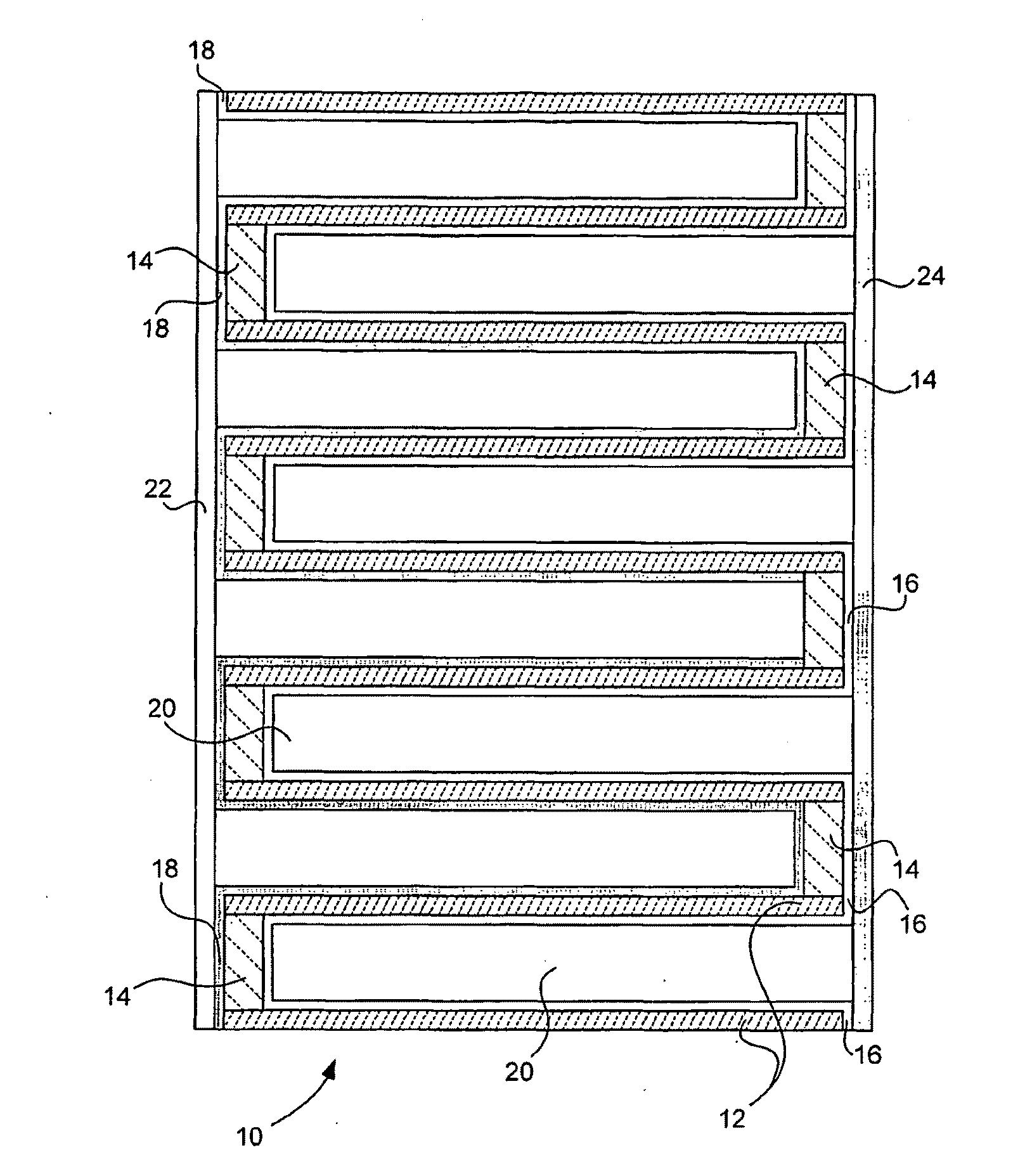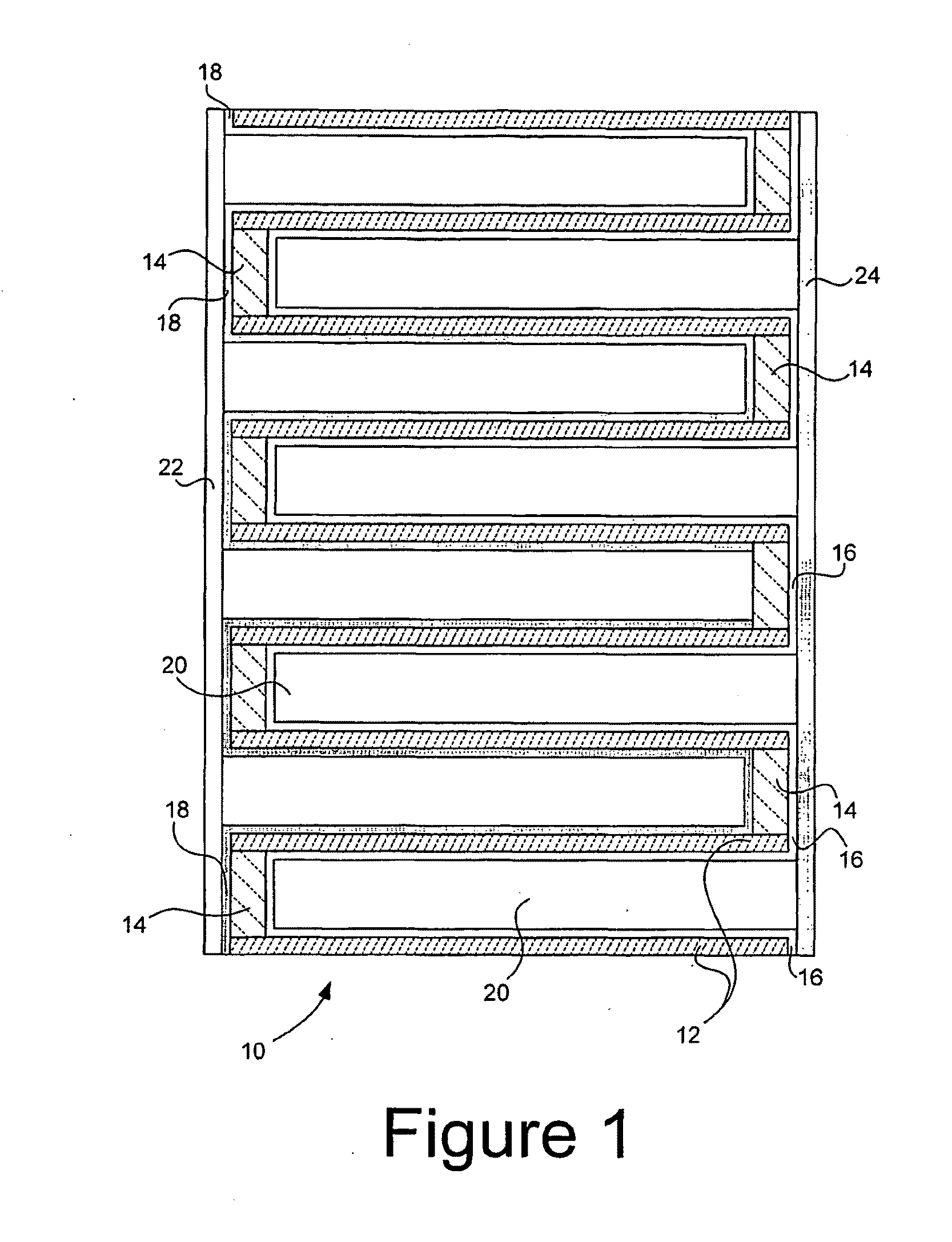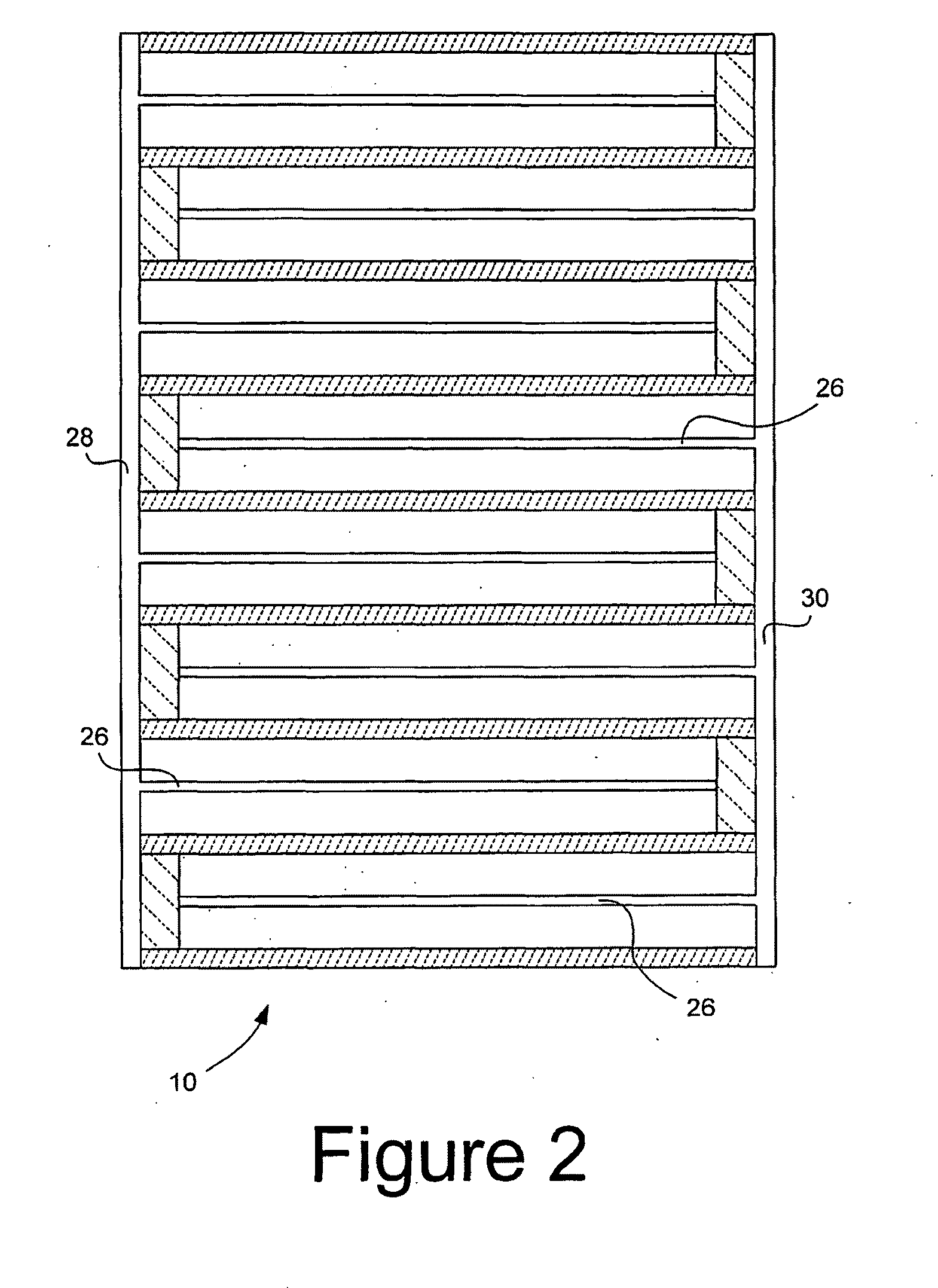Cellular Honeycomb Ultracapacitors and Hybrid Capacitors and Methods for Producing
a technology of hybrid capacitors and ultracapacitors, applied in the field of ultracapacitors and hybrid capacitors, can solve the problems of low energy and power density of ultracapacitors known today, and achieve the effect of improving energy density and power density
- Summary
- Abstract
- Description
- Claims
- Application Information
AI Technical Summary
Benefits of technology
Problems solved by technology
Method used
Image
Examples
example 1
[0055]Experiments were carried out to demonstrate certain capabilities of metal coating on honeycomb walls. Colliodal silver was coated on a 600 cell per square inch (186 cell per square cm) 4 mil (100 micron) wall cordierite honeycomb structure via dip coating. This particular honeycomb had 40% porosity in the walls. The honeycomb walls were thoroughly coated with an electrically continuous coating of silver. Most importantly, fracture surface of the honeycomb showed that there was no penetration of silver particles in the honeycomb pore structure, indicating that this is a feasible approach to metal coating. FIG. 10 is a scanning electron microscope (SEM) backscattered electron image of a polished cross-section of an intersection within the resulting coated honeycomb structure, taken at a magnification of 250×, and showing the honeycomb material 36, the pores within the honeycomb material 38, and the silver layer 40 deposited on the surface of the honeycomb material 36 but not in ...
example 2
[0056]Aluminum was thermally evaporated onto a cordierite honeycomb structure with dimensions of 600 cells per square inch (186 cells per square cm), 4 mil (100 micron) wall. An excellently adherent coating of aluminum was obtained on the walls. Porosity of the coating was demonstrated via a water drop test.
example 3
[0057]A cordierite honeycomb sample with cell dimensions of 600 cells per square inch (186 cells per square cm) and 4 mil (100 micron) wall thickness, and with a wall porosity of ˜40% and pore size of 3-5 microns, was obtained. A pin array of nickel electrodes was fabricated by chemical etching of nickel sheet or foil. The resulting array was sealed to the honeycomb from one end with a silicon resin (Dow Corning Sylgard 186). The cells with the pins were then filled with a activated carbon 80% wt. PVDF 10% wt, and carbon black 10% wt paste in acetone. After the cells were filled and dried a very compact and strong structure was formed around the pins. After drying open ends of the cells were capped with the silicone resin. The procedure was repeated with the other end of the sample. The end of the pin arrays protruding from either end of the sample were connected together to form positive and negative terminals for the capacitor. Electrolyte was then introduced in the structure via ...
PUM
| Property | Measurement | Unit |
|---|---|---|
| Temperature | aaaaa | aaaaa |
| Angle | aaaaa | aaaaa |
| Temperature | aaaaa | aaaaa |
Abstract
Description
Claims
Application Information
 Login to View More
Login to View More - R&D
- Intellectual Property
- Life Sciences
- Materials
- Tech Scout
- Unparalleled Data Quality
- Higher Quality Content
- 60% Fewer Hallucinations
Browse by: Latest US Patents, China's latest patents, Technical Efficacy Thesaurus, Application Domain, Technology Topic, Popular Technical Reports.
© 2025 PatSnap. All rights reserved.Legal|Privacy policy|Modern Slavery Act Transparency Statement|Sitemap|About US| Contact US: help@patsnap.com



